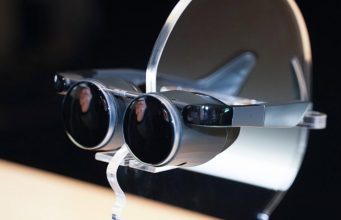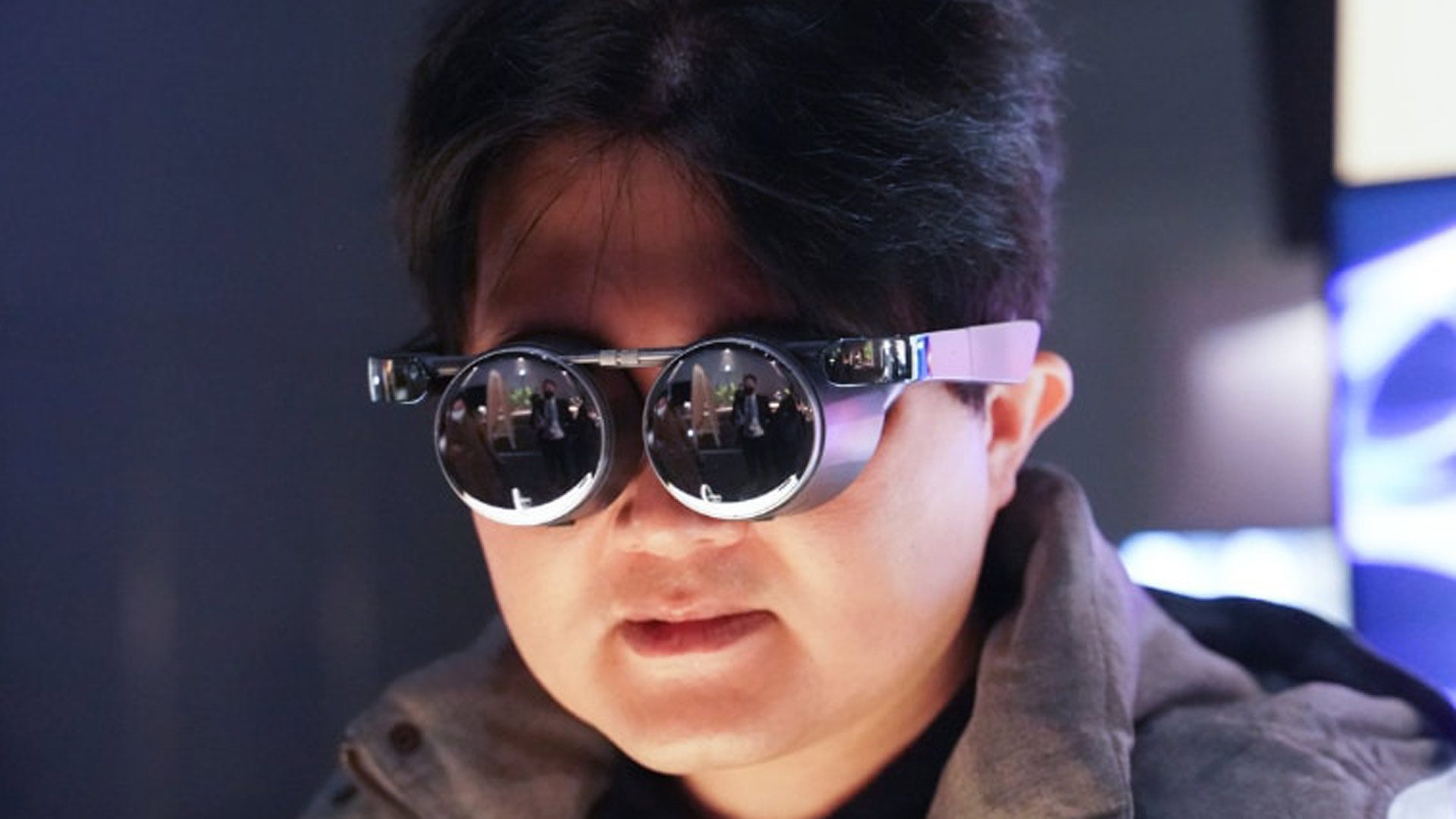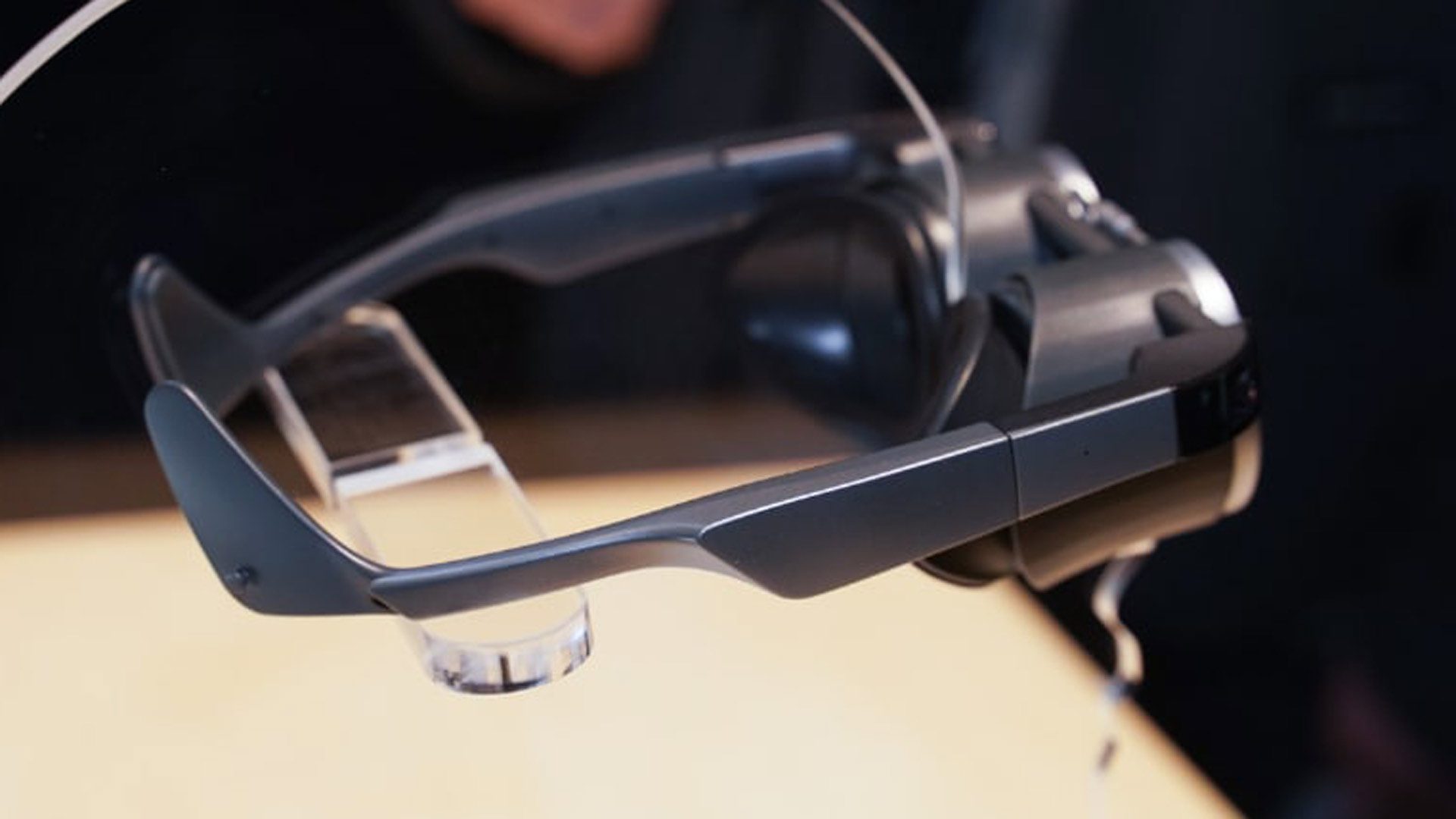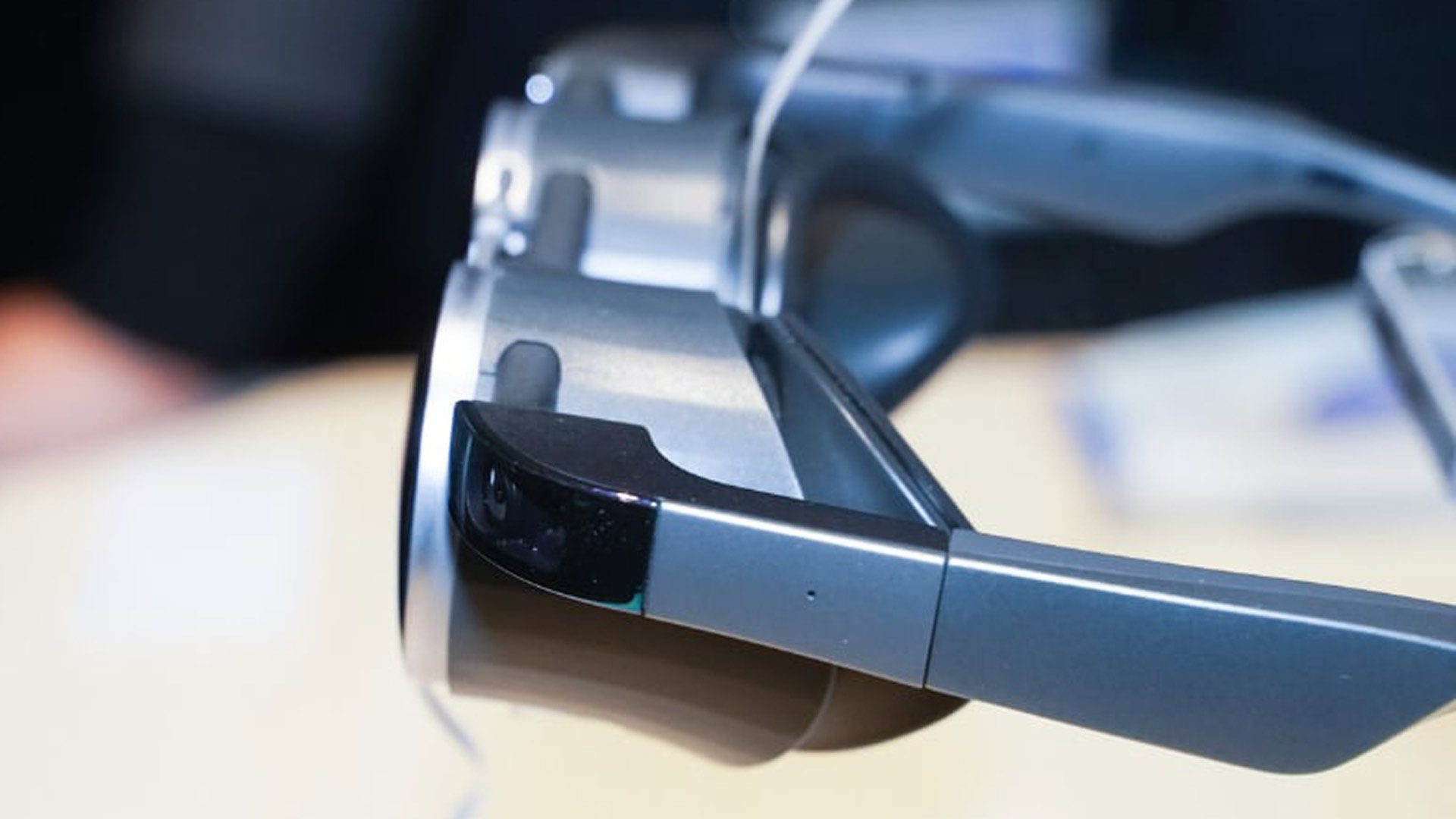
At last year’s CES, Panasonic unveiled a prototype of a pretty sleek pair of VR glasses. Only a few journalists got a chance to try the prototype then, noting that they were more akin to a ‘VR viewer’ since they lacked room-scale tracking and was primarily used for watching immersive video whilst tethered to a PC. At this year’s all-digital CES 2021, Panasonic showed off a new and improved version of the device, which packs in some pretty intriguing specs alongside the new addition of optical 6DOF tracking.
Japanese publication AVWatch got a chance to go hands-on with the new headset at an invite-only reveal concurrently held in Japan—something that wasn’t possible at CES due to the ongoing pandemic.
Although there’s no onboard computing or power—it connects to either 5G Android smartphones or PCs via a USB-C cable—it appears Panasonic is actively fleshing out the sleek little headset’s specs to appeal to consumers looking for a lightweight tethered option. It’s also said to work with SteamVR, which means users could hypothetically play games and connect via social VR platforms like Rec Room or Bigscreen.

As for specs, last year’s prototype boasted ultra high definition (UHD) resolution, which means it was likely a total of 4K resolution split between two displays. AVWatch notes that this year’s model features dual 2,560 × 2,560 micro OLEDs with a pixel density 2,245ppi.
The micro OLED panels, which were developed in collaboration with Panasonic and Kopin, are said to support 120Hz as well as HDR. Much like Pico’s G3 prototype, which hasn’t been released yet, Panasonic’s aptly names ‘VR Glasses’ also feature pancake optics, which reduce the overall bulk and weight of the device.
Beyond its basic functionality, there were a few concerns about last year’s prototype, namely its inherently front-heavy design, which made it particularly easy to slip off the nose. AVWatch notes that this year’s model has better weight distribution by both strengthening the device’s arms and improving the shape of the fins to better grip to the user’s head.

Audio is another area of improvement for the prototype, which now features integrated audio built by Panasonics’ subsidiary Technics instead of the previous design’s dangling earbuds. Panasonic didn’t comment on the exact implementation, however it sounds very similar to the way Oculus provides onboard audio in Oculus Quest and Oculus Go.
The VR glasses also include both IPD (interpupilary distance) adjustment and a diopter adjustment mechanism to accommodate near-sighted users—important features to have for such a close-fitting VR headset.

There’s still no clear price or release date in sight. Granted, it’s hard to say whether VR headsets necessarily need to ship out to consumers so quickly though. Microdisplays and pancake optics tend to provide lower field of view (FOV) than dedicated PC VR headsets or standalone devices like Oculus Quest 2, which typically range at or above 100 degrees. This year’s model still doesn’t have a verified FOV spec, but if it’s anything like last year’s it will likely be somewhere around the estimated 70 degrees.
Still, Panasonic’s VR Glasses are an amazing peek at what the near future could bring. Economies of scale could one day reduce the cost of high resolution microdisplays and custom pancake VR lenses, making a tiny pair of 6DOF specs a cheap and cheerful option among a growing sea of VR tech.
The post Panasonic Reveals Improved Specs for Its Impressively Compact VR Glasses appeared first on Road to VR.
Ream more: https://www.roadtovr.com/panasonic-vr-glasses-specs-ces-2021/
No comments:
Post a Comment